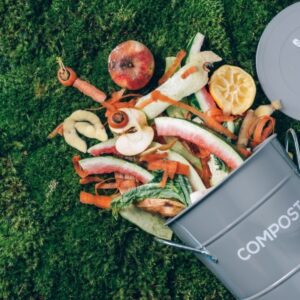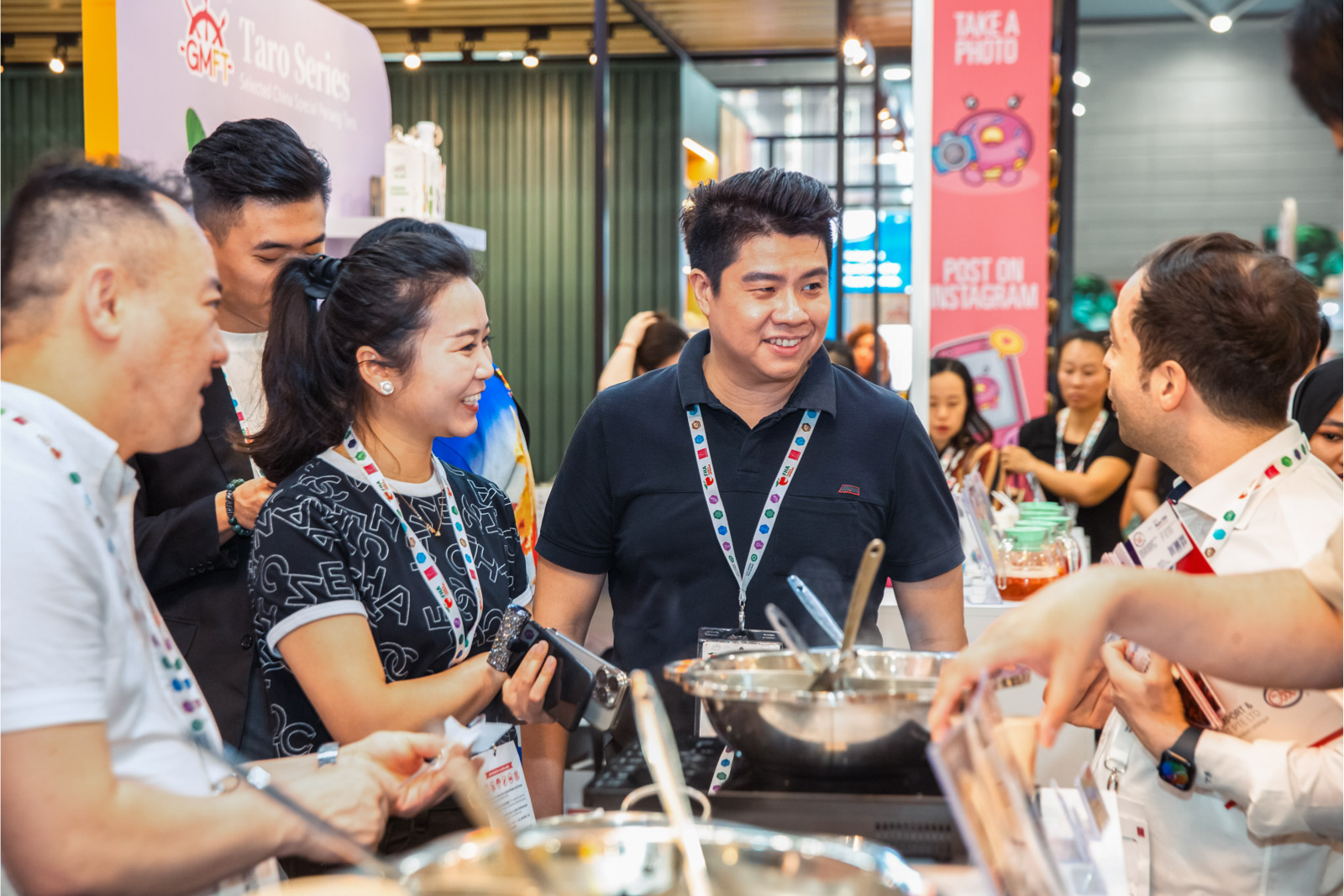Frozen desserts are no longer limited to traditional ice cream. Today’s freezers are stocked with a wide mix of treats, from fruit-based pops and dairy-free scoops to rich gelatos and inventive flavor combinations. These desserts have become an everyday favorite for many, enjoyed well beyond the summer months.
People are becoming more mindful of what they eat, and frozen desserts are part of that change. More shoppers now look for options made with real ingredients, less sugar, and no dairy. Some prefer fruit-forward treats, while others want something indulgent without the guilt.
Health, taste, and ingredient quality are starting to matter just as much as the chill and sweetness. In this ultimate guide to frozen desserts, we’ll take a closer look at what’s new in the freezer aisle, from fresh ingredients and non-dairy options to creative flavor ideas that add something new to a familiar favorite.
Current Trends in Frozen Desserts
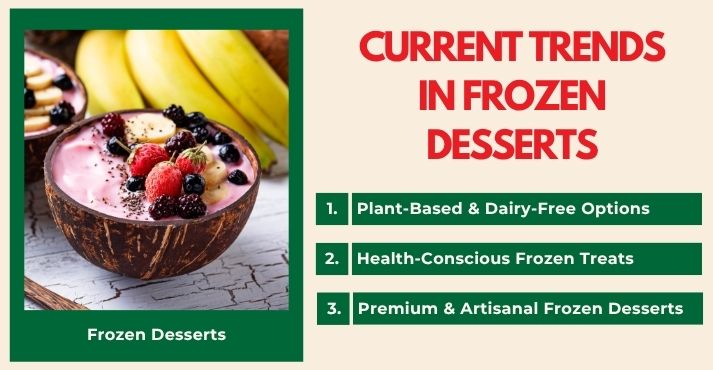
Frozen desserts are changing. While ice cream is still a favorite, there are now many other options to explore. Whether it’s a non-dairy scoop, a fruit-based bar, or a pint with less sugar, the freezer section offers more choices than ever.
This frozen treats guide looks at some of the current trends, from plant-based recipes to premium flavors made in small batches.
1. Plant-Based and Dairy-Free Options
One of the biggest changes in recent years is the rise of plant-based frozen desserts. Options made with coconut, almond, oat, and cashew milk are now common in both grocery stores and dessert shops.
These products offer the creamy texture of ice cream without any dairy, making them a go-to choice for vegans, those with lactose intolerance, or anyone looking for lighter alternatives.
In 2024, plant-based milk accounted for 36% of all milk sales in the natural grocery channel. As more people choose plant-based milk, interest in vegan-friendly frozen treats has increased, especially those made with simple ingredients and without added gums or artificial flavors.
A great example of this trend can be found in Food Nouveau’s recipe for homemade vegan gelato, which uses coconut milk and cashews to create a smooth, scoopable texture without dairy.
Now, vegan gelato comes in familiar flavors like vanilla as well as creative options such as tahini-date or espresso-oat, offering more variety to suit different tastes.
2. Health-Conscious Frozen Treats
Frozen desserts are now made with health and wellness in mind. Shoppers are choosing low-sugar and clean-label options that still feel like a treat.
Keto-friendly desserts made with alternative sweeteners are gaining more shelf space, and many products now include ingredients like protein, fiber, or probiotics.
Some brands focus on functional benefits, offering frozen snacks that support gut health or energy levels. You’ll find fruit bars with added antioxidants, Greek yogurt pops with extra protein, and sorbets that leave out refined sugar altogether.
A good example is Halo Top’s Frozen Yogurt Pops, which are made with Icelandic-style skyr, crunchy granola, and fruit. Each pop has just 110 calories and 4 grams of protein, bringing a feel-good snack that tastes like a portable parfait.
This trend is not just about cutting calories. It’s about giving people choices that align with their eating habits without giving up flavor. These kinds of health-forward items are now among the most popular frozen desserts in the wellness section of stores.
3. Premium and Artisanal Frozen Desserts
Many people are now choosing high-end, artisanal frozen desserts. These often use local fruits, organic dairy, and creative flavors that offer something different. Examples include honey-lavender ice cream, yuzu sorbet, and roasted fig gelato.
Shoppers looking for something more refined are now turning to these small-batch products, many of which come from regional producers or boutique brands.
The emphasis is on craft, freshness, and depth of flavor — qualities that set these desserts apart from mass-market varieties.
According to recent projections, the global frozen dessert market is expected to exceed $102.9 billion by 2026. A significant portion of this value comes from customers who seek premium options they believe are worth the additional cost.
Ice cream trends now include collaborations with pastry chefs, wine-based flavors, and frozen desserts based on recipes from other parts of the world. These products introduce new flavors to the freezer aisle, offering people more options to explore.
Innovations in Frozen Desserts
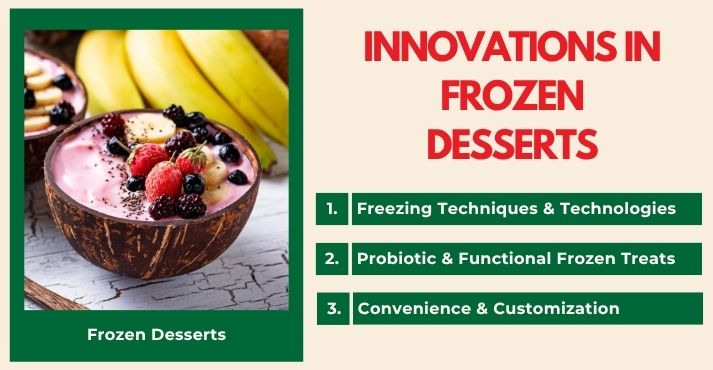
Frozen desserts are changing not just in flavor but also in how they are made, served, and enjoyed. New techniques and equipment are making textures smoother, ingredients more functional, and experiences more interactive.
These frozen dessert innovations are redefining what we find in freezers, restaurants, and even mobile apps.
1. New Freezing Techniques and Technologies
Freezing methods like flash freezing and nitrogen freezing are helping improve both texture and taste. Quick freezing leads to smaller ice crystals, which creates a creamier texture and helps preserve flavor. This is useful in ice cream shops that focus on freshness.
Cauldron Ice Cream, with locations in California and Texas, uses liquid nitrogen to freeze each order on the spot. The result is a freshly made dessert with a rich, smooth texture that requires no stabilizers or preservatives.
This method shows how technology in restaurants can change the way frozen desserts are prepared and served. It also highlights the importance of modern refrigeration equipment in achieving high-quality results.
This kind of technique gives shops more control over the final product and introduces new possibilities for the types of frozen desserts they can offer.
2. Probiotic and Functional Frozen Treats
Many frozen desserts now include ingredients that support health. Probiotics, prebiotics, fiber, and collagen are being added to products that once focused only on flavor. These additions appeal to people who want their food to do more than just taste good.
A good example is Pierre’s Yovation frozen yogurt, which includes GanedenBC30 probiotics known to support digestive health.
You can also find frozen bars with added protein, antioxidant-rich sorbets, and yogurt pops with extra fiber. These products fit into wellness-focused diets while still offering the comfort of a frozen treat.
3. Convenience and Customization
Frozen desserts are also becoming easier to access and more personal. Self-service kiosks are now available in many frozen yogurt shops, allowing customers to serve themselves and add the toppings they prefer.
Some retail stores feature build-your-own dessert counters, letting people pick a base like gelato or sorbet and then add sauces, fruits, or mix-ins.
Digital ordering has also become part of the experience. Several brands offer mobile apps that let customers select ingredients and schedule pickup or delivery. This gives people more control and makes it easier to enjoy frozen treats in the way they prefer.
These examples show how convenience and choice are becoming part of the overall experience. Whether at a self-serve station or through an app, frozen desserts are no longer one-size-fits-all.
Popular Frozen Dessert Flavors
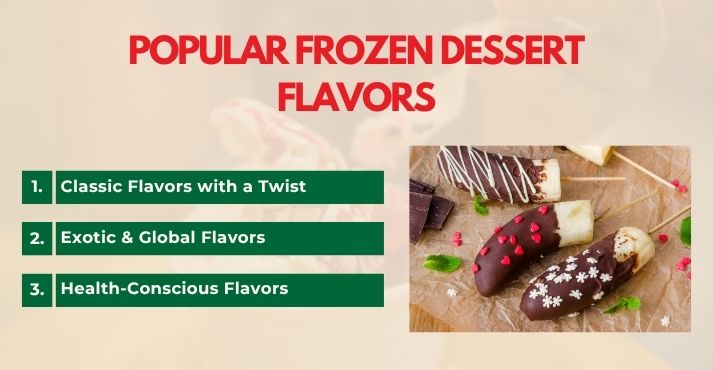
Frozen desserts today offer more than just cold sweetness. People now look for flavor combinations that are familiar but also interesting.
From traditional scoops to globally inspired and health-focused options, this range is showing up in cafes, retail freezers, and restaurant menus.
1. Classic Flavors with a Twist
Chocolate, vanilla, and strawberry remain some of the best frozen dessert flavors, but many brands are giving them new depth.
Chocolate now comes with sea salt, toasted nuts, or chili. Vanilla is being combined with caramel ribbons, bourbon flavoring, or real vanilla bean specks. These upgrades help refresh the classics without losing their broad appeal.
Halo Top’s Sea Salt Caramel flavor is a good example. It mixes sweet and salty in a light ice cream base that’s lower in calories but still creamy and satisfying. It appeals to those who want a familiar flavor with a bit more richness.
These reworked classics remain top frozen dessert flavors because they strike a balance between comfort and curiosity.
2. Exotic and Global Flavors
Frozen desserts are also taking cues from international ingredients. Ube, matcha, mango chili, miso, and turmeric are now featured in gelato shops, ice cream bars, and pints. These flavors fascinate customers who want something they haven’t tried before.
A recent global survey found that 1 in 4 consumers is interested in trying exotic flavor combinations. This explains why flavors from Asian, Latin American, and Middle Eastern cuisine are now part of many frozen product lines.
For example, My/Mochi’s Green Tea Matcha mochi ice cream offers a chewy outer layer wrapped around a smooth matcha center.
It has become a regular item in major grocery chains, showing that ingredients once considered niche now have broader appeal. This increasing demand for new tastes is helping expand frozen dessert varieties across both specialty and mainstream markets.
3. Health-Conscious Flavors
As wellness becomes more important in food and beverage choices, frozen desserts are following the same direction. Flavors now include superfoods like acai, spirulina, black sesame, and elderberry.
These ingredients are often paired with yogurt bases, fruit purées, or reduced-sugar blends. They offer a lighter option without removing the flavor experience.
As the category continues to expand, health-focused options are no longer separate but a regular part of what people expect in the freezer aisle.
Key Ingredients in High-Quality Frozen Desserts
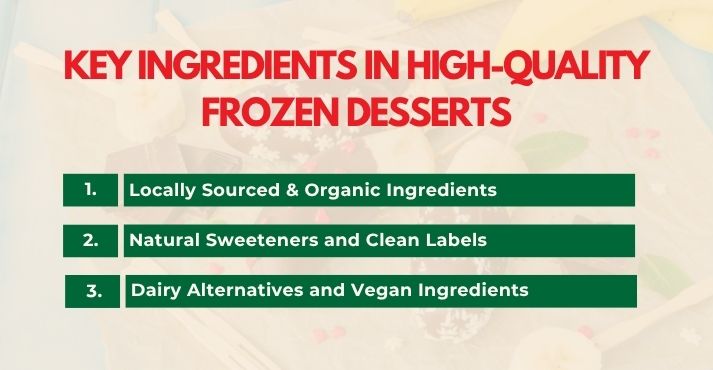
Great frozen desserts start with good ingredients. From fruit to sweeteners to milk alternatives, each element affects how the final product tastes, feels, and appeals to different customers.
Whether made at home or in a commercial kitchen, quality choices can make one dessert stand out from another.
1. Locally Sourced and Organic Ingredients
Many frozen desserts now feature locally grown fruits, fresh herbs, and organic nuts. These ingredients are often picked at peak ripeness, which adds more natural flavor and texture.
Using local produce also supports small farms and reduces the distance between the source and the kitchen.
Organic ingredients are especially valued in the food service industry because they meet the demand for fewer chemicals and more traceability. A strawberry sorbet made with organic berries and lemon juice can taste cleaner and fresher than one with added flavors or stabilizers.
In cafes and dessert shops, signs often mention the farms or orchards from which their fruit or dairy products come. For customers, this detail matters.
2. Natural Sweeteners and Clean Labels
Many frozen dessert recipes now use sweeteners like honey, agave, maple syrup, or stevia. These choices offer a simple way to add sweetness without processed sugar.
They’re also better aligned with what shoppers expect from a clean-label product — short ingredient lists and no artificial colors or additives.
A fruit pop made with just fruit purée and a touch of maple syrup is more appealing to someone reading labels than one with high-fructose corn syrup or artificial dyes.
Clean-label desserts have become more common across retail brands and small shops. In many kitchens, this also makes preparation easier, as fewer ingredients mean fewer steps and less reliance on additives in kitchenware or storage containers.
3. Dairy Alternatives and Vegan Ingredients
Coconut milk, almond milk, and oat milk are now common in frozen dessert ideas. These plant-based options help create the creamy texture people want from ice cream without using dairy. They are a popular choice for people who are vegan, lactose intolerant, or avoiding common allergens.
Oat milk is especially popular in frozen treats because it combines smoothly with other ingredients and works well in both fruit-based and chocolate flavors.
Brands that use dairy alternatives often highlight this on their packaging or menus, making it easier for people with dietary restrictions to find frozen dessert options that fit their needs.
The Future of Frozen Desserts
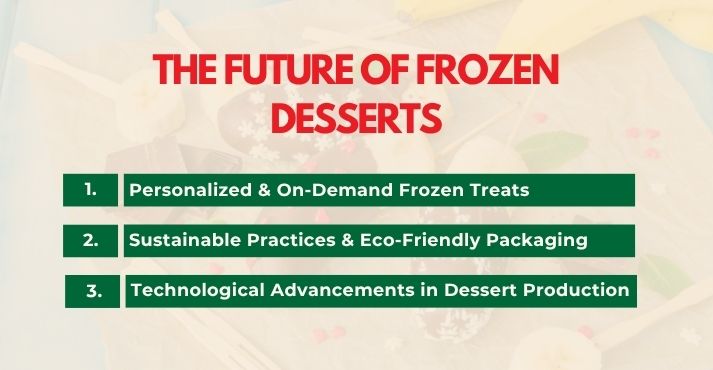
Frozen desserts are changing as people pay more attention to how their food is made, where it comes from, and how it fits into their lifestyle. Looking ahead, three areas are gaining importance: customization, sustainability, and smarter production.
1. Personalized and On-Demand Frozen Treats
Customers now want more control over what they eat and how they get it. Frozen treat shops are offering more options through mobile apps and websites where people can choose their base, flavors, and toppings before placing an order. Some even offer home delivery within hours.
A good example is Creamistry, a shop that allows customers to select their ingredients online, then flash-freezes the ice cream with liquid nitrogen after the order is placed.
This process combines convenience with freshness, providing a more personalized experience for people. These kinds of frozen dessert services are becoming easier to access, especially in large cities.
2. Sustainable Practices and Eco-Friendly Packaging
Sustainability is becoming more important in how frozen desserts are made and packaged. Many brands are using containers made from paper, plant fibers, or other biodegradable materials instead of plastic. Spoons and lids are also being redesigned to reduce waste.
At the same time, more producers are focusing on using sustainably sourced ingredients and reducing their carbon footprint by purchasing from nearby farms or minimizing energy use during production.
According to a 2023 McKinsey report, over 60% of consumers stated that they are willing to pay more for products that use eco-friendly packaging.
This change is not just about packaging. It’s about responsible sourcing, better energy use, and thoughtful delivery methods that align with today’s values.
3. Technological Advancements in Frozen Dessert Production
New machines and better tracking systems are changing how frozen desserts are made. Types of refrigerators now include smart models that can adjust cooling levels automatically and reduce power use during off-hours.
In larger kitchens, automated lines mix, freeze, and pack frozen desserts with more accuracy and less waste. These updates help producers maintain consistency and improve shelf life without relying on unnecessary additives.
As the production process becomes more efficient, customers benefit from better-quality products that are easier to store and distribute. Many businesses in the food service industry now rely on this equipment to meet demand while managing costs effectively.
These improvements also make it easier to test new flavors and formats, supporting variety and reliability in some of the best frozen desserts available today.
How to Stay Ahead in the Frozen Dessert Market

The frozen dessert industry continues to change with consumer habits, ingredient choices, and new ways of delivering products. For businesses, staying competitive means being alert to market signals and ready to adjust.
The following areas can help operators stay prepared and relevant:
1. Keep Up with Emerging Trends
Frozen dessert businesses that stay connected to what customers want are more likely to grow. Trade shows, food expos, and local tastings are good opportunities to learn what’s coming next. These events offer a look at new ingredients, equipment, and packaging.
Working closely with the right suppliers also helps. Reliable suppliers can provide insights into seasonal ingredients, changing demand, and production methods that others are adopting.
Keeping an eye on consumer behavior, whether through store feedback, online reviews, or market research, provides businesses with the information they need to make adjustments quickly.
2. Focus on Sustainability and Health-Conscious Options
More customers now expect brands to care about the origin of their ingredients and the manufacturing process. Using sustainable food sources like organic fruit, fair-trade chocolate, and biodegradable packaging can build long-term trust.
Products with fewer additives, lower sugar, and dairy-free options also appeal to people who are mindful about what they eat.
Focusing on these values does more than meet demand. It often attracts a more loyal group of customers who are willing to return for quality and consistency.
3. Innovation and Customization for Consumer Engagement
Frozen dessert menus that allow for variety and choice tend to keep customers coming back. Shops that offer rotating seasonal flavors, customizable toppings, or build-your-own options give people something new to look forward to.
Experimenting with flavors, like adding spices, floral notes, or global ingredients, also helps a brand stand out. Limited-time items or collaborations with local producers can increase interest and foot traffic without requiring permanent changes to the menu.
Innovation doesn’t require a full kitchen overhaul. Even simple updates can keep things fresh and build a stronger connection between product and customer.
Conclusion
The frozen dessert market continues to change through new flavors, better ingredients, and smarter ways to produce and serve.
From non-dairy options and superfood combinations to global flavors and customizable treats, frozen desserts now reflect a wide range of tastes and values.
Technology is improving quality and efficiency, while sustainability and clean-label choices are becoming a part of everyday business practices. For brands and producers, staying competitive means more than just offering something sweet.
It requires a focus on innovation, awareness of health-conscious habits, and a commitment to sourcing and packaging responsibly.
By following these steps, businesses can keep pace with what people want and build lasting success in a fast-moving, flavor-driven industry.




